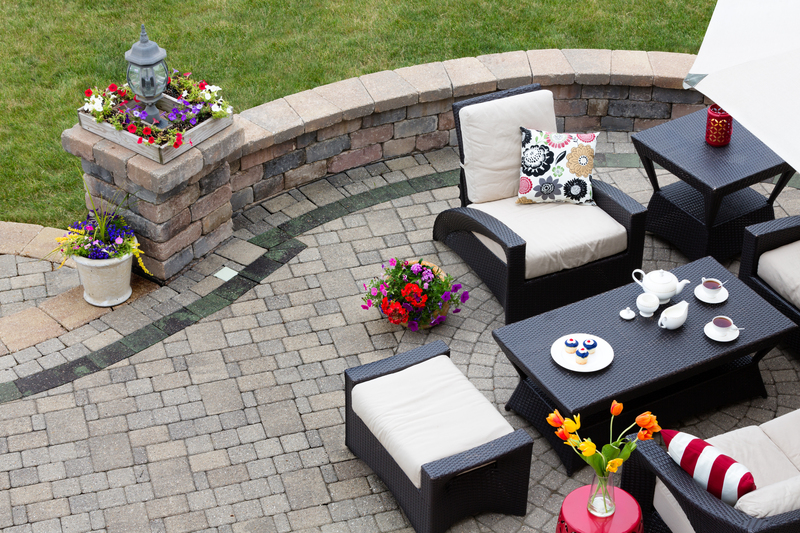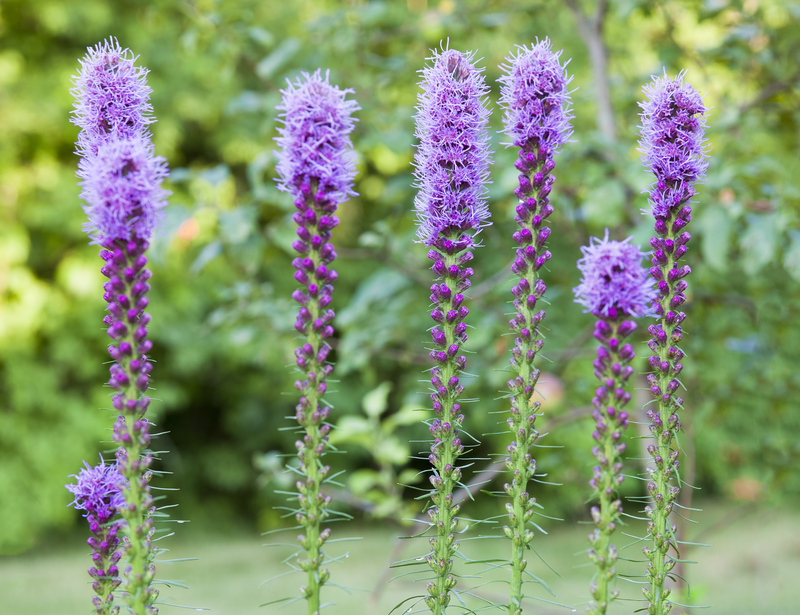Windbreaks and Barriers: Essential for Windy Gardens
Posted on 28/09/2025
Windbreaks and Barriers: Essential for Windy Gardens
Gardening in windy conditions can be a challenge, but with the right strategies and structures, your garden can thrive even in the breeziest locales. Windbreaks and barriers are invaluable tools for any gardener facing relentless gusts. This in-depth guide will explore how these features protect your plants, improve your landscape, and enhance garden productivity--proving why windbreaks and barriers are truly essential for windy gardens.
Understanding the Impact of Wind on Gardens
Before diving into solutions, it's important to comprehend how wind affects your vegetation and soil. Gardens exposed to persistent wind encounter numerous issues:
- Increased evaporation: Wind accelerates soil and leaf moisture loss, dehydrating plants.
- Physical damage: Gusts can break stems, strip leaves, and uproot young plants.
- Temperature fluctuations: Wind can make air temperatures feel cooler or even create microclimates.
- Soil erosion: Topsoil can be blown away, leading to nutrient loss and poor root anchorage.
- Pollination disruption: Too much wind can inhibit pollinators and reduce fruit set in some crops.
With these challenges in mind, incorporating windbreaks and garden barriers becomes a smart and necessary step for wind-exposed landscapes.

What are Windbreaks and Barriers?
Windbreaks and barriers are physical structures or plantings designed to reduce wind speed, shelter your garden, and create a healthier environment for your plants. Their design, placement, and choice of materials make a significant difference in their effectiveness.
Types of Windbreaks for Gardens
- Living windbreaks: Rows of trees, hedges, or shrubs that grow to deflect and filter the wind.
- Structural barriers: Fences, walls, windbreak netting, or screens that physically block the wind.
- Temporary solutions: Utilizing garden fabric, trellises, or movable screens to protect delicate plants during peak winds.
Benefits of Windbreaks and Barriers in Windy Gardens
- Reduce wind speed, minimizing damage to foliage and stems.
- Conserve soil moisture by lowering evaporation rates.
- Prevent soil erosion, helping plants establish stronger root systems.
- Create microclimates that allow a wider range of plants to thrive.
- Encourage biodiversity by offering shelter to beneficial insects and wildlife.
Designing Effective Windbreaks in Your Garden
Not all windbreaks are created equal. To maximize the protection of your garden, consider the following design principles when planning windbreaks and barriers:
Location and Orientation
Identify the direction of prevailing winds in your area. Windbreaks should be positioned perpendicular to these winds for maximum impact. For most gardens in the Northern Hemisphere, this means placing your windbreaks to the north or northwest.
Height and Length
The height of your windbreak dictates how much area it will protect. As a general rule, a windbreak will shield an area that is 5 to 10 times its height in the downwind direction. Longer windbreaks without gaps provide more effective protection, but even breaking up a larger area with several smaller barriers can be helpful.
Density
Surprisingly, the best windbreaks are not completely solid. Wind screens or plantings that filter the wind--rather than block it entirely--reduce turbulence and protect a greater area. Aim for a density that allows about 40-60% air passage for optimal shelter.
Layering and Plant Selection
- Layering: Planting multiple rows of varying heights (tall trees, medium shrubs, groundcovers) helps slow wind speed gradually.
- Choosing hardy species: For living windbreaks, select species known for their wind tolerance and adaptability to your climate.
Best Plants for Living Windbreaks and Hedges
Living windbreaks are not just functional--they can enhance the beauty and biodiversity of your garden. Here are some top choices for resilient, attractive shelterbelts:
Evergreen Trees and Shrubs
- Pine (Pinus spp.)
- Spruce (Picea spp.)
- Holly (Ilex aquifolium)
- Laurel (Prunus laurocerasus)
- Boxwood (Buxus sempervirens)
Deciduous Options
- Hawthorn (Crataegus)
- Hazel (Corylus avellana)
- Rowan (Sorbus aucuparia)
- Hornbeam (Carpinus betulus)
Native Grasses and Bamboo
- Feather reed grass (Calamagrostis)
- Switchgrass (Panicum virgatum)
- Bamboo (Phyllostachys species, non-invasive types preferred)
Tip: Work with native species whenever possible for better survival rates and greater benefits to local wildlife.
Structural Barriers: Fences, Walls, and Artificial Screens
When a living windbreak isn't feasible or you need immediate protection, structural wind barriers come to the rescue. They offer instant shelter and can be tailored to fit even small urban gardens.
Fences
- Permeable designs (such as slatted wood or woven willow) effectively diffuse wind speed and turbulence.
- Solid fences can generate strong eddies and only protect the immediate leeward area. To extend their protection, consider planting shrubs in front.
Walls
- Stone or brick walls offer permanent wind protection, especially for patios or delicate plant zones.
- Add climbing plants or trellises to soften the look and increase gentle air flow.
Netting and Temporary Screens
- Use horticultural windbreak mesh in seasons of high wind to shelter new plantings or seedlings.
- Movable panels or frames allow flexibility as garden needs change.
Additional Benefits of Windbreaks and Garden Barriers
Besides mitigating wind, windbreaks and barriers offer a range of unexpected perks:
- Privacy: Hedges, fences, and screens define property lines and create peaceful outdoor rooms.
- Wildlife habitats: Dense shrubs and trees become sanctuaries for birds, bees, and butterflies.
- Noise reduction: Thick windbreaks can also muffle urban or street noise.
- Year-round interest: Many barrier plants provide seasonal flowers, berries, or fall color.
- Enhanced microclimates: Sheltered gardens stay warmer, extend the growing season, and open up options for more tender species.
Installation Tips and Maintenance
Planning Your Windbreak or Barrier
- Map out the garden and determine main wind directions and vulnerable zones.
- Choose the right materials based on budget, style, and maintenance preferences.
- Start with temporary solutions while living windbreaks establish and grow.
Maintenance Practices
- Regular pruning keeps living windbreaks dense and manageable.
- Inspect structural barriers for damage after storms and repair as needed.
- Remove invasive weeds around tree and shrub roots.
- Mulch and water new plantings to speed growth and establishment.
How to Combine Windbreaks with Other Garden Strategies
Windbreaks and barriers are most effective as part of a holistic garden plan. Consider these complementary approaches:
- Raised beds and mulch: Retain soil and moisture where the wind is strongest.
- Strategic plant placement: Place wind-sensitive plants in sheltered zones, and tough varieties on exposed borders.
- Companion planting: Use taller plants or temporary crops as sacrificial shields for vulnerable seedlings.
Combining these elements with windbreaks will dramatically boost the resilience of your windy garden.
Case Studies: Success Stories in Windy Gardens
Seaside Gardens
Coastal gardens are infamous for their strong, salt-laden winds. By establishing dense belts of salt-tolerant evergreens and hardy shrubs, many gardeners have transformed wind-scorched plots into lush landscapes brimming with flowers and vegetables.
Urban Rooftop Oases
Rooftop gardens often experience fierce updrafts. Modular screen fences, wire mesh, and tightly grouped containers act as effective windbreaks for herbs and soft-stemmed plants, creating tranquil spaces even in the heart of the city.
Open-Field Farms
Agricultural fields can lose tons of topsoil to wind erosion. Farmers succeed by planting tree rows at intervals, transforming wide-open land into protected zones where both crops and livestock flourish--a testament to the enduring value of windbreaks and barriers.
Common Mistakes and How to Avoid Them
- Gaps in windbreaks: Openings allow wind to funnel through at dangerous speeds. Always stagger plantings and overlap structural barriers for continuity.
- Wrong species selection: Unsuitable plants may die or perform poorly in harsh winds. Pick proven wind-tolerant varieties adapted to your climate.
- Insufficient height or length: Underestimating the necessary size of your windbreak limits its effectiveness.
- Neglecting maintenance: Allowing windbreaks to become sparse or damaged reduces their ability to protect your garden.
By learning from these pitfalls, your windbreaks can become a long-lasting asset for your outdoor space.

Frequently Asked Questions About Windbreaks and Barriers for Windy Gardens
How long does it take for a living windbreak to provide protection?
Depending on species and growing conditions, many living windbreaks require 2-5 years to offer substantial wind protection. Quick-growing options and temporary structures can provide immediate benefits.
Are solid walls or fences better than living windbreaks?
Solid barriers provide instant protection, but living windbreaks create better microclimates by filtering and slowing wind rather than creating turbulent eddies. A combination often yields optimal results.
Can I use windbreaks in a small urban garden?
Absolutely! Even low hedges, trellises, or decorative willow fencing can shield tender plants and increase privacy in tiny spaces.
What are the cheapest windbreak options?
Fast-growing shrubs, recycled pallets (used as slatted fences), and garden netting are all budget-friendly windbreak choices.
Conclusion: Transform Your Windy Garden with Windbreaks and Barriers
Harsh winds need not dictate your gardening success. By investing in well-designed windbreaks and barriers, you not only shield your plants from damage but also unlock new possibilities for beauty, productivity, and biodiversity in your outdoor space. Whether you opt for natural hedges, sturdy fences, or creative combinations, these protective features are truly essential for wind-prone gardens.
With careful planning and a tailored approach, you can create a peaceful, resilient haven for plants, pollinators, and people--no matter how hard the wind blows.
Looking for more windproof garden ideas? Explore our resources on plant selection, landscape design, and eco-friendly gardening for wind-exposed sites. Share your own windbreak success stories in the comments below!

